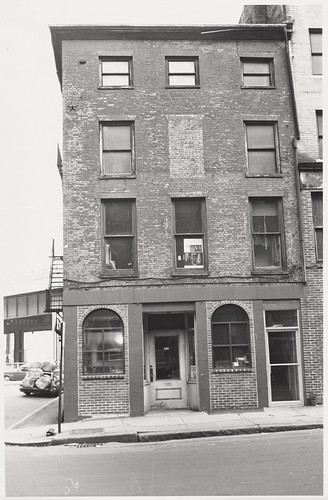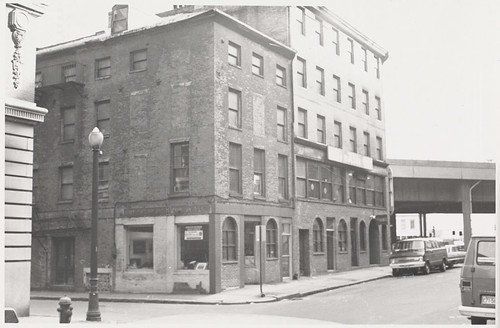Boston developer eyes condos for Littlest Bar building
By Jerry Kronenberg
Friday, July 1, 2011
Boston developer David Goldman plans to build a luxury condo complex along the Rose Kennedy Greenway at 102-110 Broad St., which currently houses the Hub’s famous Littlest Bar.
Goldman disclosed in a letter made public today by the Boston Redevelopment Authority that he intends to develop a “luxury residential building” on the 7,840-square-foot site.
The developer’s company, New Boston Ventures, has disclosed online that it intends to build a 16-story tower with 54 condos, a health club, underground parking, a restaurant and an outdoor cafe.
Goldman noted in the BRA filing that he intends to “preserve and restore” the roughly 205-year-old warehouse on the site that currently houses the Littlest Bar and the Times Irish Pub and Restaurant.
Goldman did not immediately return a call seeking comment about his project.
A former aide to late Sen. Paul Tsongas, the builder has developed many high-profile Greater Boston condo projects over the years.
His New Boston Ventures firm is perhaps best known for cutting a deal to turn Salem’s 200-year-old former jail into condos.
Link
By Jerry Kronenberg
Friday, July 1, 2011
Boston developer David Goldman plans to build a luxury condo complex along the Rose Kennedy Greenway at 102-110 Broad St., which currently houses the Hub’s famous Littlest Bar.
Goldman disclosed in a letter made public today by the Boston Redevelopment Authority that he intends to develop a “luxury residential building” on the 7,840-square-foot site.
The developer’s company, New Boston Ventures, has disclosed online that it intends to build a 16-story tower with 54 condos, a health club, underground parking, a restaurant and an outdoor cafe.
Goldman noted in the BRA filing that he intends to “preserve and restore” the roughly 205-year-old warehouse on the site that currently houses the Littlest Bar and the Times Irish Pub and Restaurant.
Goldman did not immediately return a call seeking comment about his project.
A former aide to late Sen. Paul Tsongas, the builder has developed many high-profile Greater Boston condo projects over the years.
His New Boston Ventures firm is perhaps best known for cutting a deal to turn Salem’s 200-year-old former jail into condos.
Link






